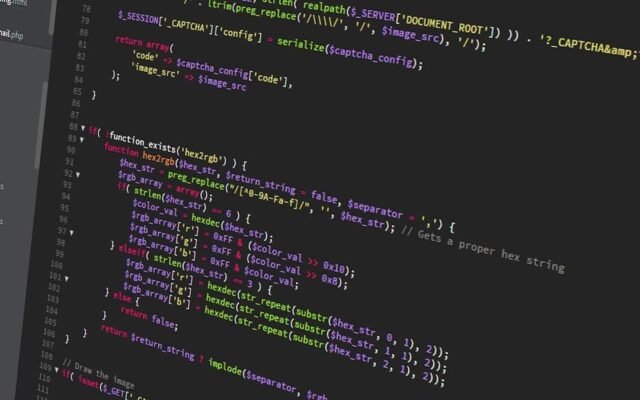What are the Differences Between Asset Management and Wealth Management? They are two distinct disciplines within the field of finance. While they both involve the management of financial resources, there are notable differences between the two.
How to Understand the Differences Between Asset Management and Wealth Management. Its Definition, Comparison Chart, Examples, and Key Points.
Asset management typically refers to the professional management of investments on behalf of individuals, corporations, or institutions. The focus is primarily on managing a portfolio of financial assets such as stocks, bonds, mutual funds, and other securities. Asset managers aim to maximize investment returns while minimizing risk, often through diversification and active investment strategies.
On the other hand, wealth management encompasses a broader range of services aimed at helping individuals and families preserve, grow, and transfer their wealth over generations. Wealth managers take a holistic approach by considering not only investments but also tax planning, estate planning, retirement planning, and other aspects of personal finance. They provide comprehensive financial advice and guidance tailored to the specific needs and goals of their clients.
Asset management primarily focuses on managing investment portfolios to generate financial returns, whereas wealth management takes a more comprehensive approach by considering a broader range of financial aspects and goals. Both play crucial roles in the financial industry and serve different needs depending on individual circumstances and objectives.

Definition of Asset Management
Asset management typically refers to the professional management of investments on behalf of individuals, corporations, or institutions. The focus is primarily on managing a portfolio of financial assets such as stocks, bonds, mutual funds, and other securities. Asset managers aim to maximize investment returns while minimizing risk, often through diversification and active investment strategies.
Definition of Wealth Management
Wealth management involves comprehensive financial planning, investment management, and personalized advisory services for individuals or families with substantial assets. It goes beyond just managing investments and encompasses a holistic approach to financial well-being. Wealth managers work closely with clients to understand their financial goals, risk tolerance, and overall lifestyle to create a customized strategy. This may involve tax planning, estate planning, retirement planning, and other wealth preservation strategies. The goal of wealth management is to help clients grow, protect, and transfer their wealth efficiently and effectively.
10 Comparison Chart for the Difference between Asset Management and Wealth Management
Sure! Here is an expanded comparison chart highlighting the difference between Asset Management and Wealth Management in ten different aspects:
| Comparison | Asset Management | Wealth Management |
|---|---|---|
| Definition | Professional management of a variety of investments to meet specific financial goals | Comprehensive management of investments and overall finances to achieve long-term objectives |
| Focus | Primarily focused on optimizing and maximizing the returns of investments | Holistic approach that includes investment management, financial planning, tax planning, and estate planning |
| Target Audience | Individual investors and institutional clients | High-net-worth individuals and families |
| Investment Strategy | Diversification and portfolio optimization based on risk profile and objectives | Customized investment plan based on client’s financial goals, risk tolerance, and time horizon |
| Services Offered | A holistic approach that includes investment management, financial planning, tax planning, and estate planning | Investment advisory, tax planning, estate planning, retirement planning, and wealth transfer |
| Asset Classes | Basic asset classes: stocks, bonds, cash, real estate | Same as asset management, but may also include alternative investments such as private equity, hedge funds, and real estate partnerships |
| Compensation Model | Fee-based or commission-based | Fee-based or fee-only |
| Relationship with Clients | Professional-client relationship focused on investment management | Investment advisory, portfolio construction, and monitoring |
| Regulatory Oversight | Regulated by financial authorities such as SEC, FCA, or CySEC | Same as asset management, with additional compliance requirements given the larger scope of services |
| Key Goals and Objectives | Maximize investment returns within defined risk parameters | Preserve and grow wealth, plan for retirement, minimize tax liabilities, and create a lasting legacy |
Please note: Asset management and wealth management practices may vary between institutions and jurisdictions. It’s advisable to consult professionals for personalized advice specific to your situation.
Examples of Differences between Asset Management and Wealth Management
Certainly! Here are some examples that illustrate the differences between asset management and wealth management:
- Focus: Asset management primarily focuses on managing investment portfolios and maximizing returns. While wealth management takes a more holistic approach by considering a broader range of financial aspects and goals.
- Services Offered: Asset management typically offers investment advisory services, portfolio construction, and monitoring. Wealth management, on the other hand, provides comprehensive financial planning, investment management, tax planning, estate planning, retirement planning, and wealth transfer services.
- Target Audience: Asset management caters to individual investors and institutional clients. Whereas wealth management is generally tailored for high-net-worth individuals and families who have substantial assets.
- Investment Strategy: Asset management employs diversification and portfolio optimization based on risk profiles and objectives. Wealth management, however, creates customized investment plans based on a client’s specific financial goals, risk tolerance, and time horizon.
- Compensation Model: Asset management can have a fee-based or commission-based compensation structure, while wealth management is typically fee-based or fee-only.
- Relationship with Clients: Asset management usually involves a professional-client relationship focused on investment management. Wealth management, on the other hand, establishes a personalized, long-term relationship with clients, managing both investments and overall financial matters.
- Asset Classes: Asset management focuses on basic asset classes such as stocks, bonds, cash, and real estate. Wealth management, while including these asset classes. May also incorporate alternative investments like private equity, hedge funds, and real estate partnerships.
Different examples
- Regulatory Oversight: Asset management is regulated by financial authorities, such as the SEC, FCA, or CySEC. Wealth management, due to its broader range of services, may have additional compliance requirements.
- Key Goals and Objectives: Asset management aims to maximize investment returns within defined risk parameters. Wealth management aims to preserve and grow wealth, plan for retirement, minimize tax liabilities, and create a lasting legacy.
- Scope: Asset management primarily focuses on managing a portfolio of financial assets. Wealth management encompasses a broader range of financial services, including tax planning, estate planning, and retirement planning.
Please note that these are the main key differences and its practices may vary between institutions and jurisdictions. It is advisable to consult professionals for personalized advice specific to your situation.
The main key point Differences between Asset Management and Wealth Management
Here are the key differences between asset management and wealth management:
- Definition: Asset management primarily focuses on the professional management of investments. Whereas wealth management encompasses comprehensive financial planning, investment management, and personalized advisory services.
- Focus: Asset management is primarily focused on optimizing and maximizing the returns of investments. While wealth management takes a holistic approach that includes investment management, financial planning, tax planning, and estate planning.
- Target Audience: Asset management caters to individual investors and institutional clients. While wealth management is generally tailored for high-net-worth individuals and families with substantial assets.
- Investment Strategy: Asset management employs diversification and portfolio optimization based on risk profiles and objectives. Whereas wealth management creates customized investment plans based on a client’s specific financial goals, risk tolerance, and time horizon.
- Services Offered: Asset management typically offers investment advisory services, portfolio construction, and monitoring. While wealth management provides comprehensive financial planning, investment management, tax planning, estate planning, retirement planning, and wealth transfer services.
- Compensation Model: Asset management can have a fee-based or commission-based compensation structure, while wealth management is typically fee-based or fee-only.
- Relationship with Clients: Asset management usually involves a professional-client relationship focused on investment management. Whereas wealth management establishes a personalized, long-term relationship with clients, managing both investments and overall financial matters.
Additional keys
- Asset Classes: Asset management focuses on basic asset classes such as stocks, bonds, cash, and real estate. While wealth management may also include alternative investments such as private equity, hedge funds, and real estate partnerships.
- Regulatory Oversight: Asset management is regulated by financial authorities. Such as the SEC, FCA, or CySEC, while wealth management may have additional compliance requirements given the larger scope of services.
- Key Goals and Objectives: Asset management aims to maximize investment returns within defined risk parameters. Whereas wealth management aims to preserve and grow wealth, and retirement plans, minimize tax liabilities, and create a lasting legacy.
It’s important to note that these are the main key differences and asset management and wealth management practices may vary between institutions and jurisdictions. It is advisable to consult professionals for personalized advice specific to your situation.
Bottom line
Asset management and wealth management are two distinct disciplines within the field of finance. Asset management refers to the professional management of investments. Primarily focusing on managing a portfolio of financial assets to maximize returns while minimizing risk. Wealth management, on the other hand, encompasses a broader range of services aimed at helping individuals and families preserve, grow, and transfer their wealth.
It takes a holistic approach by considering not only investments. But also tax planning, estate planning, retirement planning, and other aspects of personal finance. Asset management primarily focuses on managing investment portfolios. While wealth management takes a more comprehensive approach by considering a broader range of financial aspects and goals. Both play crucial roles in the financial industry and serve different needs depending on individual circumstances and objectives.



















